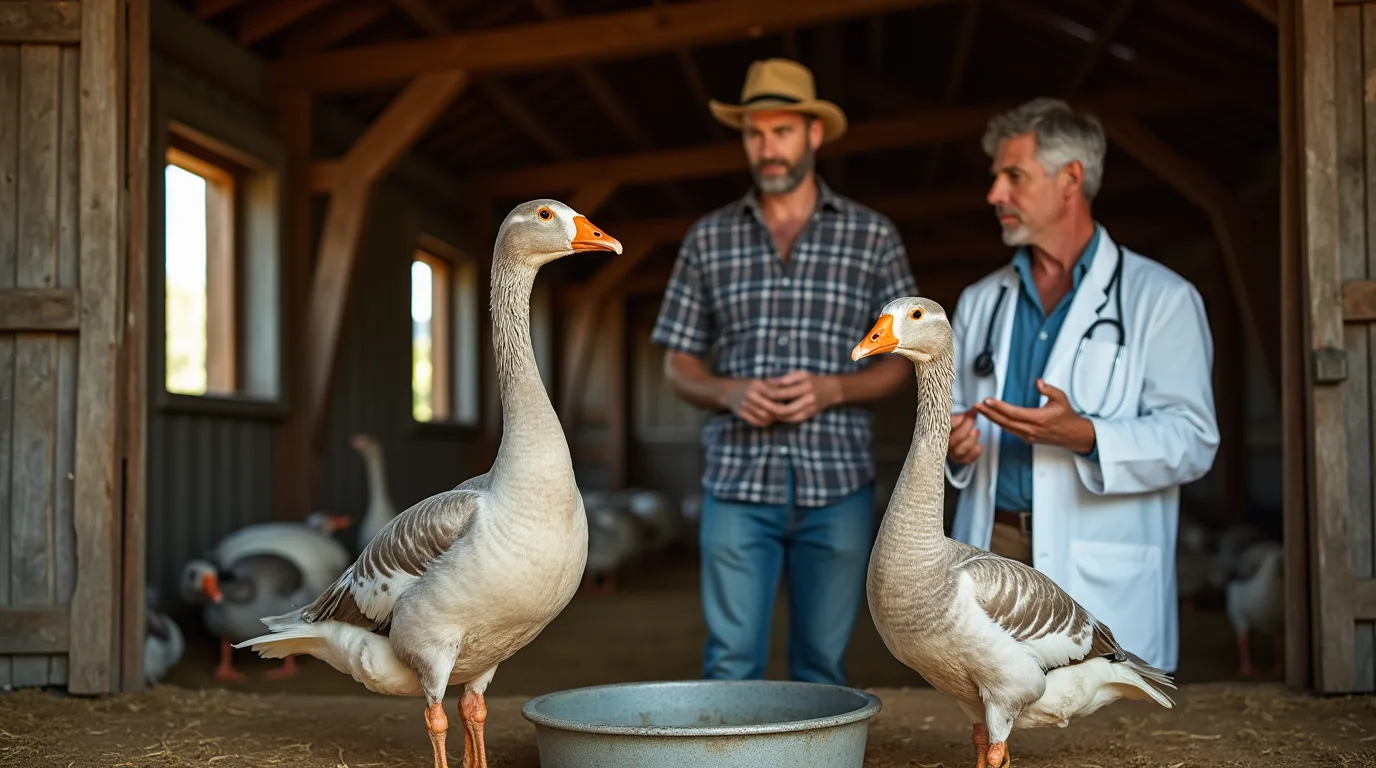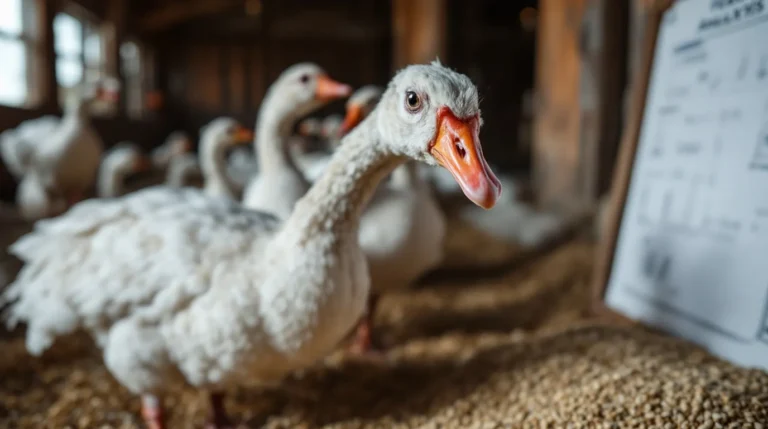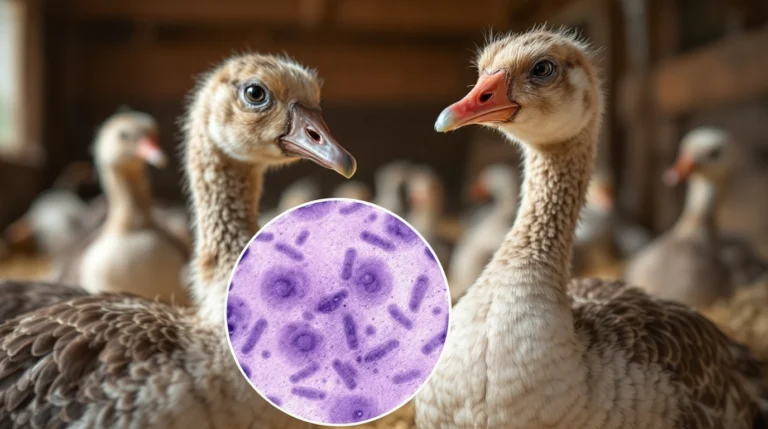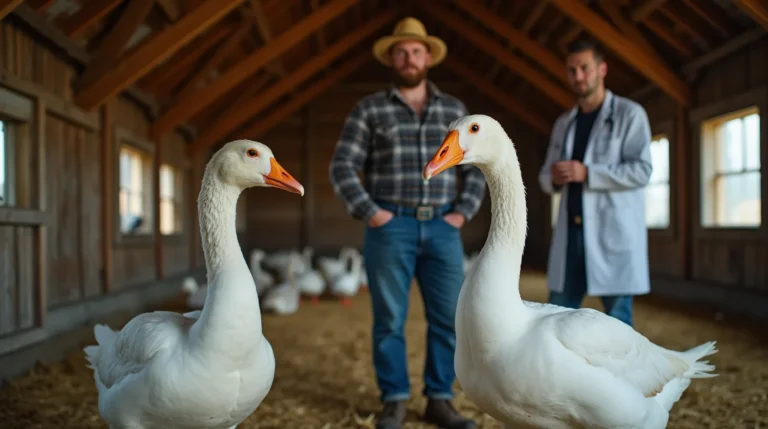Protect your geese from deadly ammonia poisoning in Geese . Learn the top 5 causes, prevention strategies, and critical health insights for responsible goose care.

Table of Contents
Geese are magnificent and resilient birds, but they are surprisingly vulnerable to environmental hazards that can quickly compromise their health. Among these dangers, ammonia poisoning stands out as a silent yet potentially devastating threat to your flock. Whether you’re a professional veterinarian, a dedicated farm owner, or a first-time goose caretaker, understanding the intricacies of ammonia poisoning in geese is crucial for maintaining their well-being and preventing potentially fatal consequences.
Ammonia poisoning occurs when geese are exposed to high concentrations of ammonia gas, typically in enclosed or poorly ventilated spaces. This comprehensive guide will explore the five primary causes of ammonia poisoning, provide expert insights into prevention, and equip you with the knowledge to safeguard your feathered friends.
Understanding Ammonia Poisoning in Geese
What is Ammonia Poisoning?
Ammonia poisoning is a serious condition that occurs when geese are exposed to excessive ammonia concentrations, primarily generated from accumulated waste, decomposing organic matter, and inadequate ventilation. The toxic gas can cause severe respiratory distress, damage to the respiratory tract, and potentially lead to fatal outcomes if not addressed promptly.
The Physiology of Ammonia’s Impact on Geese
Geese have highly sensitive respiratory systems that are particularly vulnerable to ammonia’s harmful effects. When inhaled, ammonia can:
- Damage the delicate lung tissues
- Impair oxygen absorption
- Compromise the bird’s immune system
- Cause chronic respiratory complications
5 Primary Causes of Ammonia Poisoning in Geese
1. Poor Enclosure Ventilation
Impact: Inadequate air circulation is the most common cause of ammonia buildup.
Key Considerations:
- Minimum recommended air exchange: 4-6 complete air changes per hour
- Proper ventilation reduces ammonia concentration
- Use of adjustable ventilation systems crucial in different seasonal conditions
2. Excessive Waste Accumulation
Waste Management Insights:
- Accumulated droppings rapidly generate ammonia
- Ideal cleaning frequency: Daily spot cleaning, comprehensive cleaning weekly
- Recommended bedding materials: Absorbent, quick-drying substrates like pine shavings
3. Overcrowding
Population Density Risks:
- More birds = Higher waste production
- Recommended space per goose: Minimum 4-5 square feet
- Overcrowding exponentially increases ammonia generation
4. Inappropriate Litter Management
Litter Quality Factors:
- Moisture content directly correlates with ammonia production
- Target moisture level: Below 25-30%
- Regular litter treatment with agricultural lime can neutralize ammonia
5. Climate and Humidity Conditions
Environmental Influences:
- Higher temperatures accelerate ammonia generation
- Humid environments increase ammonia concentration
- Seasonal adjustments in ventilation and waste management critical
Preventing Ammonia Poisoning: Comprehensive Strategies
Ventilation Optimization
- Install adjustable ventilation systems
- Use digital ammonia sensors for continuous monitoring
- Implement cross-ventilation techniques
Waste Management Protocols
- Develop a rigorous cleaning schedule
- Use enzymatic cleaners to break down waste
- Implement composting systems for efficient waste disposal
Flock Management
- Maintain appropriate population density
- Regular health monitoring
- Implement quarantine protocols for new birds
Recommended Health Products for Geese
1. AirFlow Pro Ventilation Sensor
- Digital ammonia and humidity tracker
- Real-time mobile alerts
- Ideal for large and small flocks
- Price Range: $129.99
2. EcoClean Enzymatic Litter Treatment
- Neutralizes ammonia
- Promotes faster waste decomposition
- Organic and safe for poultry
- Price Range: $24.99
3. UltraAbsorb Pine Bedding
- Low-dust, high-absorption bedding
- Reduces moisture and ammonia generation
- 100% natural pine shavings
- Price Range: $19.99
4. Poultry Health Monitoring Kit
- Comprehensive health assessment tools
- Includes ammonia detection strips
- Professional-grade equipment
- Price Range: $89.99
Ammonia Poisoning in Geese (FAQ)
Q1: How quickly can ammonia harm geese?
Exposure to ammonia concentrations above 25 ppm can cause respiratory damage within hours.
Q2: What are the early signs of ammonia poisoning?
- Labored breathing
- Reduced activity
- Watery eyes
- Nasal discharge
- Decreased feed intake
Q3: Can ammonia poisoning be reversed?
Early detection and immediate intervention can mitigate long-term damage. Consult a veterinarian immediately.
Q4: How often should I test for ammonia levels?
Recommended frequency:
- Daily in enclosed spaces
- Weekly in well-ventilated areas
- Before and after significant environmental changes
Q5: Are some goose breeds more susceptible?
While all geese are vulnerable, younger birds and those with pre-existing respiratory conditions are at higher risk.
Conclusion
Protecting your geese from ammonia poisoning in geese, requires a proactive, multifaceted approach. By understanding the causes, implementing robust prevention strategies, and maintaining vigilant health monitoring, you can create a safe, healthy environment for your flock.
We want to hear from you!
- Share your experiences with goose care
- Have you dealt with ammonia-related challenges?
- Leave a comment below and help our community learn and grow!
For more expert poultry care tips and comprehensive guides, visit BlithePet
Disclaimer: Always consult with a professional veterinarian for personalized advice tailored to your specific flock’s needs.





